2018年 報告(2017年度プログラム)
2018年 海外短期フィールドワーク 児童発達学科 報告09-1
【2018年 海外短期フィールドワーク 児童発達学科 報告09-1】
■ Cabrillo College(アメリカ カリフォルニア州 サンタクルーズ) での海外短期フィールドワークです。
■日付は、日本時間での表記です(現地は、1日前になります)。
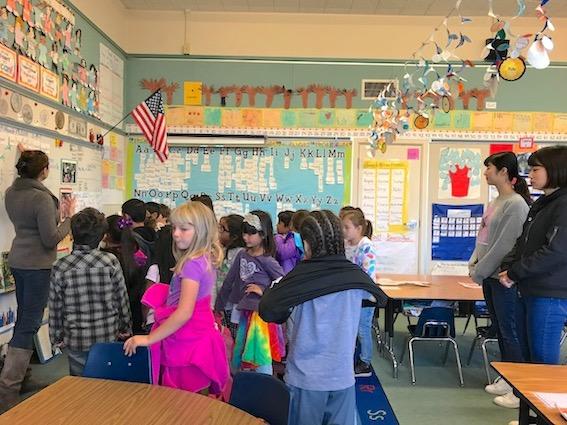
2018/03/20
今日から実習が始まります。6名がリンツコット小学校に行きます。写真の二人は1年生の「Heart 組」で実習をします。最初はちょっと緊張気味でした。でも、先生も子どもたちはみんな親切でしたね。ゆっくり話してくれていましたよ。
Six students had their internships at Linscott Charter School. These two were welcomed to the Heart Room, the 1st grade class. They looked nervous at first, but the teacher and their students were kind and friendly, and spoke to them slowly.
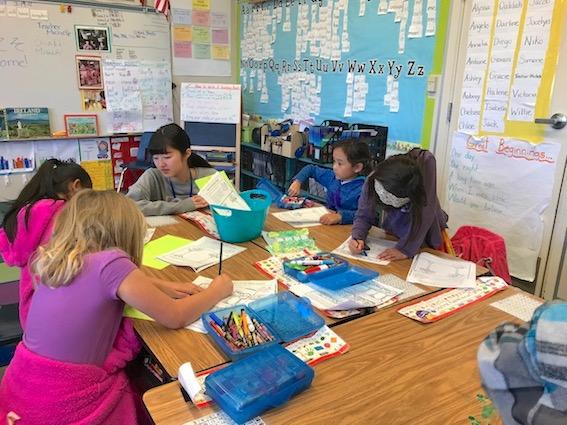
2018/03/20
このグループでは熱帯雨林の塗り絵をしていました。昨日の聖パトリックの緑から、環境や生態系へと発展した課題のようです。
In this group, the students had rainforest worksheets to color and were learning ecosystems.
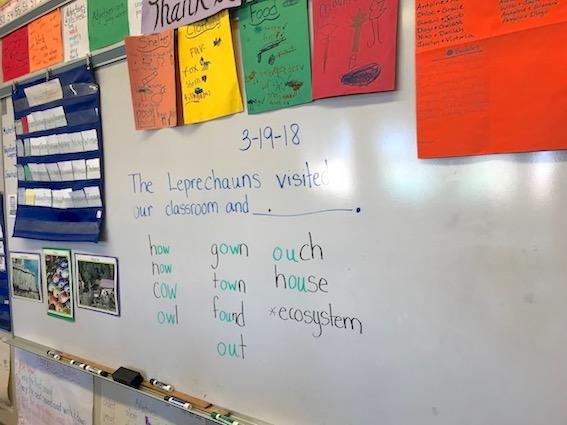
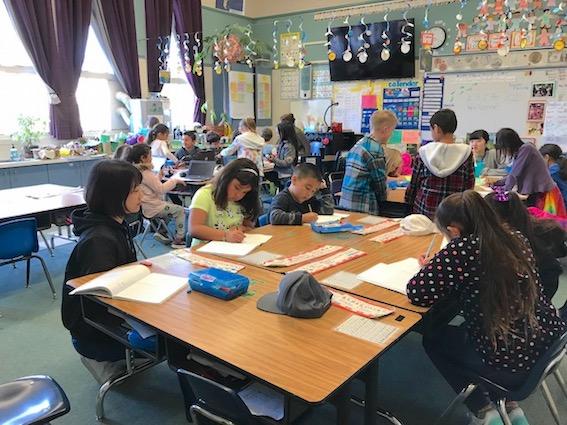
2018/03/20
こちらのグループでも、聖パトリックの日にちなんだ課題です。いたずら好きの妖精がクラスに入ってきて、緑の足跡が至る所についています。そこでの創作です。「妖精(レプリコン)が教室にやってきて _____ 」と何かを入れて、文章を完結させます。1年生は、まだまだスペルが確かじゃありません。「Make」の過去形のスペルがいろいろですが、それも発達過程にあるミスなので修正しません。それに「invented spelling」という名前がついているほどです。
In this group, the students were writing a phrase to complete the sentence of “The Leprechauns visited our classroom and __________ .” Japanese students had no idea what leprechauns were, but they tried to learn together with the 1st graders. A boy wrote “made a mess”, another “maked a big mess”, still another “mayd a mess.” They are examples of invented spelling, which are OK on the path to literacy.
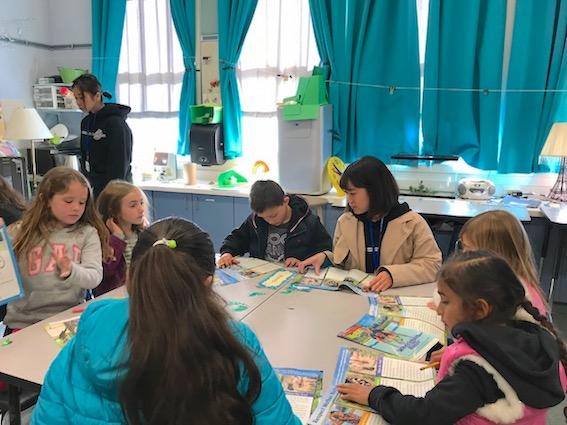
2018/03/20
今朝、実習に入るクラスの変更が急にありました。学生たちはそれでなくても緊張しているのに、本当に慌てたようです。この二人も予定していたクラスではない「Rainbow組」に入ることになりました。幸運にも、担任の先生がLisaで、何とか今日の計画の中に学生たちを組み入れてくれたみたいです。突然の変更は受け入れる先生にとっても大変なことです。このクラスはレベルの異なる子どもたちがいるのでグループ学習になりますが、何が起こっているのかについていくのが、今日は難しかったですね。明日はもっと慣れてくるでしょう。
These students were supposed to be in the Discovery room, but they were asked to be in the Rainbow room for the 1st to 3rd graders instead this morning. This change was not expected but Lisa, the teacher, welcomed them and asked Japanese students to help her students reading a passage, discussing the theme, and doing comprehension quizzes. Their reading levels were different, so it’s even harder for Japanese students to understand what was going on.
